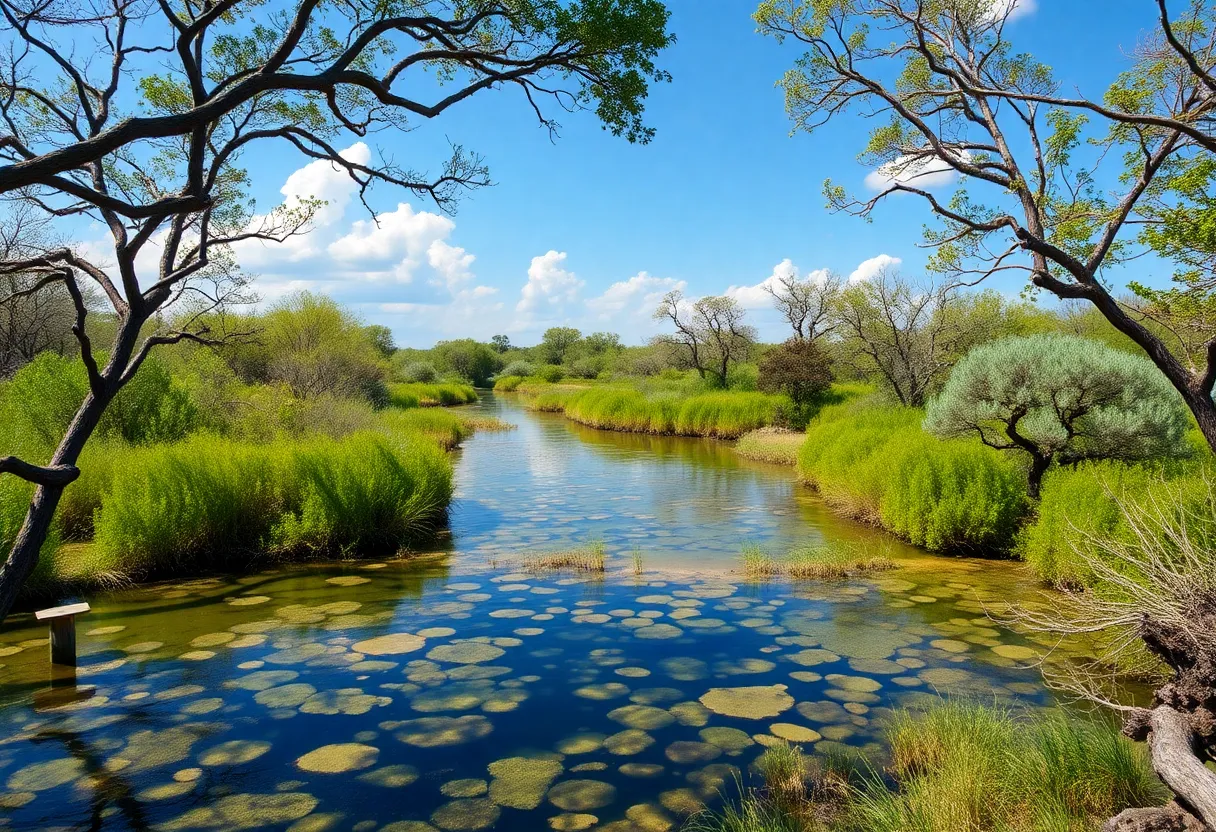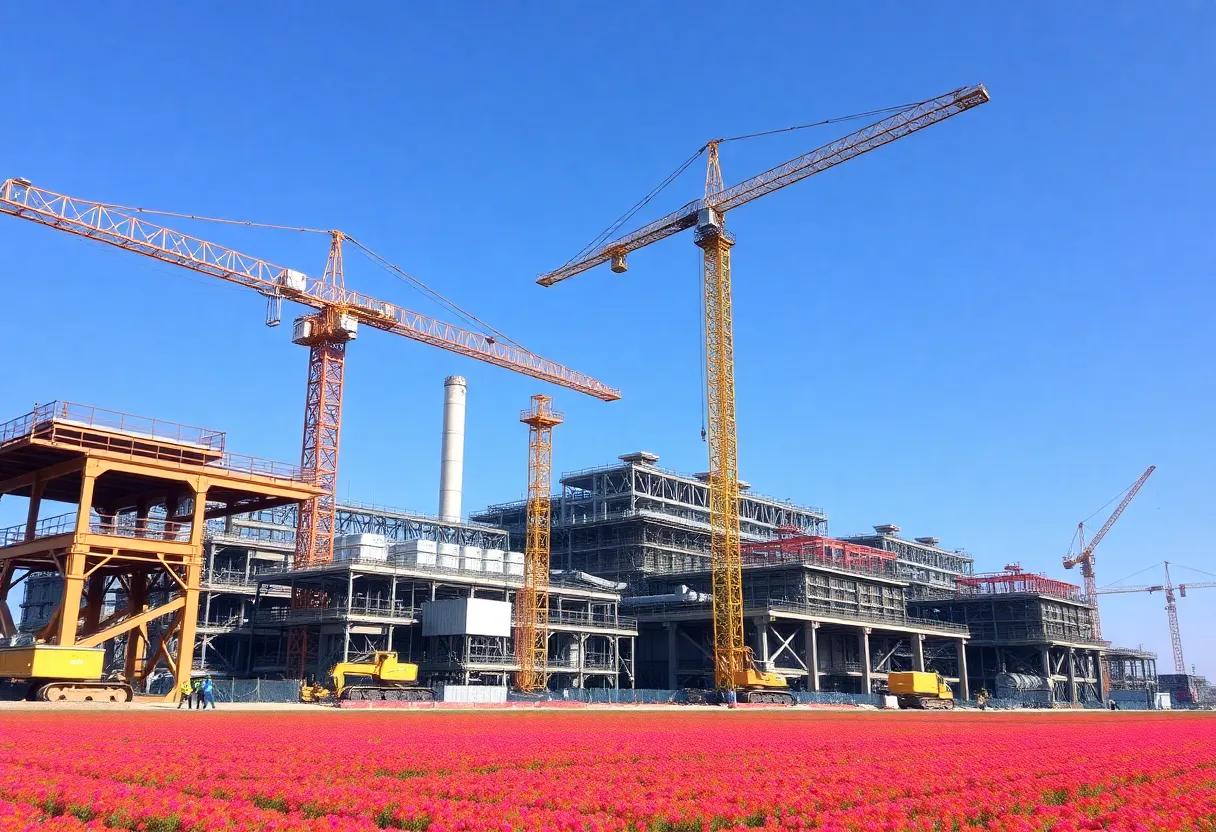News Summary
The U.S. Fish and Wildlife Service has finalized a recovery plan for seven endangered or threatened species within the Edwards Aquifer in Texas. This initiative aims to implement conservation measures for species like the Texas wild-rice and Fountain darter, which face significant threats due to groundwater depletion and urban development. The plan outlines necessary actions to ensure these species’ recovery and emphasizes the crucial need to protect both the aquifer and surrounding ecosystems.
U.S. Fish and Wildlife Service Finalizes Recovery Plan for Seven Endangered Species of the Edwards Aquifer in Texas
Austin, Texas—The U.S. Fish and Wildlife Service has finalized a crucial recovery plan targeting seven federally protected species that inhabit the Edwards Aquifer region in Central and South Texas. These species are currently classified as endangered or threatened under the Endangered Species Act (ESA), highlighting the importance of immediate conservation efforts in this vital ecosystem.
Details of the Recovery Plan
The newly established recovery plan specifically addresses the following species:
- Texas wild-rice (endangered plant)
- Comal Springs dryopid beetle (endangered)
- Comal Springs riffle beetle (endangered)
- Fountain darter (endangered fish)
- Peck’s cave amphipod (endangered crustacean)
- Texas blind salamander (endangered)
- San Marcos salamander (threatened)
These species are primarily located within the Comal and San Marcos spring systems situated in Comal and Hays counties, Texas, both of which rely heavily on groundwater sourced from the southern Edwards Aquifer. The aim of the plan is to establish actionable guidelines to ensure the recovery of these species, with the ultimate goal of removing them from federal protection under the ESA.
Threats to Survival
The species outlined in this recovery strategy face several primary threats, primarily revolving around the depletion of groundwater. Issues such as reduced spring flow and habitat degradation stemming from excessive aquifer drawdown pose significant risks to their survival. Additionally, the Edwards Aquifer region is experiencing rapid urban development, which heightens the threats to both water quality and quantity essential for these aquatic species.
The Recovery Strategy
In light of these challenges, the recovery strategy emphasizes the need for preserving, restoring, and managing aquatic habitats and water resources that are crucial for maintaining healthy populations and ecosystems in the region. Key components of this plan include:
- Utilizing stock populations or creating captive refugia to safeguard against potential catastrophic events.
- Implementing recovery actions through cooperative efforts among stakeholders, which will be voluntary and not legally mandated.
- Defining specific actions necessary for the recovery of these species, along with criteria for delisting and estimates pertaining to the time and costs related to implementing these actions.
Importance of Aquifer Protection
Safeguarding the Edwards Aquifer is vital not only for the wellbeing of the listed species but also for the local human populations that depend on this crucial water source. The interconnectedness of this ecosystem underscores the importance of responsible water management practices to ensure sustainability for both natural habitats and community needs.
Accessing the Recovery Plan
The finalized recovery plan serves as a comprehensive guide that outlines necessary actions and collaboration frameworks for the recovery of the endangered species. Individuals interested in reviewing the document can access an electronic version on the U.S. Fish and Wildlife Service’s ecological services website. Requests for a physical copy can be directed to the U.S. Fish and Wildlife Service, Austin Ecological Services Field Office.
This initiative marks a significant step towards the conservation of endangered species in the Edwards Aquifer region, emphasizing the shared responsibility for maintaining a healthy environment that benefits both wildlife and human inhabitants.
Deeper Dive: News & Info About This Topic
HERE Resources
Georgetown Prepares for Major Water Infrastructure Expansion
Additional Resources
- Uvalde Leader News
- Wikipedia: Edwards Aquifer
- Express News: San Antonio Water System
- Google Search: Edwards Aquifer
- Community Impact: San Antonio Plans for Future Water Security
- Google Scholar: Edwards Aquifer
- Community Impact: Strain on Central Texas Water Supply
- Encyclopedia Britannica: Edwards Aquifer
- Politico Pro: Protecting Texas Aquifer
- Google News: Edwards Aquifer
Author: STAFF HERE GEORGETOWN
The GEORGETOWN STAFF WRITER represents the experienced team at HEREgeorgetown.com, your go-to source for actionable local news and information in Georgetown, Williamson County, and beyond. Specializing in "news you can use," we cover essential topics like product reviews for personal and business needs, local business directories, politics, real estate trends, neighborhood insights, and state news affecting the area—with deep expertise drawn from years of dedicated reporting and strong community input, including local press releases and business updates. We deliver top reporting on high-value events such as the Red Poppy Festival, Georgetown Swirl, and Christmas Stroll. Our coverage extends to key organizations like the Georgetown Chamber of Commerce and the Downtown Georgetown Association, plus leading businesses in manufacturing and tourism that power the local economy such as local wineries and historic downtown shops. As part of the broader HERE network, including HEREaustin.com, HEREcollegestation.com, HEREdallas.com, HEREhouston.com, HEREgeorgetown.com, and HEREsanantonio.com, we provide comprehensive, credible insights into Texas's dynamic landscape.






